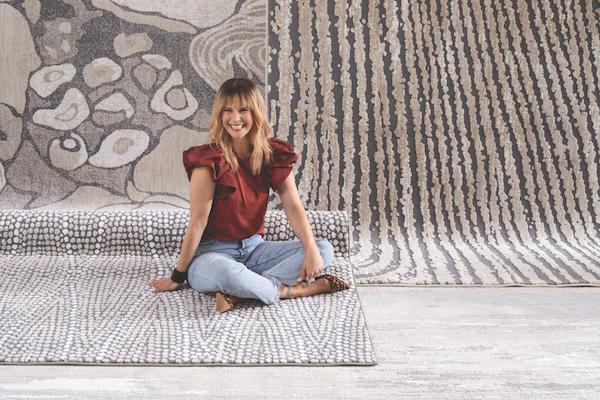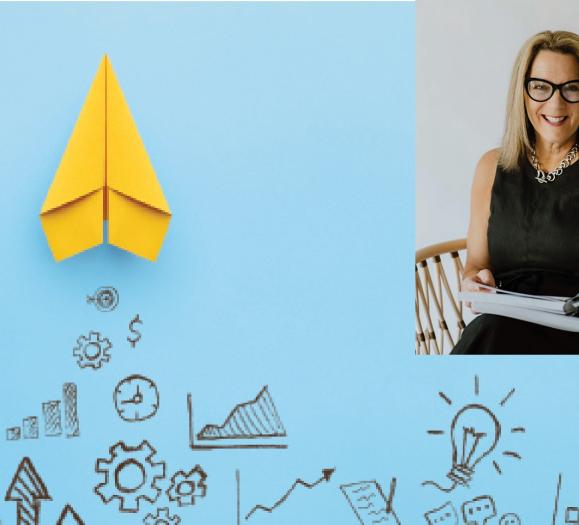You design the spaces. You spec the custom lighting, furniture and home decor for some of your clients. We’ve learned that it is the dream of many a designer to launch a product or collection, licensed with another supplier, or under their own branding. In the first quarter of 2022 in Design Coaching Center, we’re talking with designers who’ve done it both ways: working with a manufacturer to bring a home furnishings collection to life, or creating a company so you have full control.
Surface-pattern-designer-turned-licensee-extraordinaire Stacy Garcia has come at product development in both ways, even as her original goal was working with manufacturers under licensing agreements. “People look at licensing and think it’s so glamorous. Mailbox checks,” Garcia says. “It’s a lot of work actually; it’s a business. Licensing your products takes time, money, energy and resources. Often we learn by failing. There’s no stamping it out as every brand represents something different.”
Garcia has had multiple successful licensed launches over the past 20 years, with companies from Krypton and Klaussner to her newest rug launch with Karastan.
She went to school to for this path, having focused on surface pattern design. Out of school she interned for Ralph Lauren, where she says much of the business was done via licensing. “It planted an early seed for me. As a surface pattern designer, I knew I wanted to build a brand through the magic of licensing and brand partnerships,” she notes. “My plan was to identify trends, come up with new designs and partner with companies that had the logistics, sales and manufacturing capabilities.”
Not So Fast
As an unknown name, however, breaking into licensing was not as easy as Garcia had hoped. After pitching her designs and ideas and hearing “no,” she launched her own company focused on textiles for hospitality. Garcia used LebaTex to market herself and prove the concept of how her designs work in the market. “Having my own company was never my dream,” she says. “I never wanted the production, sales or importing responsibilities. I did it because I saw it as a way to have these collections with my name on it.”
Fast forward 22 years, and not only did LebaTex get Garcia’s name out there, it continues to be a mainstay in her business.
Today, she has numerous licensing partnerships — 22 and counting— some that have lasted for 15 years. “That’s unheard of in the licensing world. The average licensing agreement is a three-year deal. We write for five, and then renew for another five and renew again. Each time we assess if these are still working.” Her first licensing deal was with Hunter Douglas, and then Shaw and Mohawk. These were focused on the hospitality segment, as was LebaTex. She still collects royalties from those collaborations.
The Relationship Game
Since those early days, Garcia has also taken on the consumer market with furniture, home decor, textile and rug collections. She’s always in the market for new partnerships, she says, and she is also careful about assessing her existing partnerships each year. Her newest partnership with Karastan brought her into the rug category. “They don’t want to deviate from their client base but also they want to address a more modern market,” Garcia says.
To be successful and happy in a licensing partnership, she continues, designers really need to understand their goals. “You need to ask, ‘What does my brand represent in the market and what am I comfortable attaching my name to?’” she says. The Stacy Garcia Home brand is about affordable luxury and quality with a modern eclectic design aesthetic. Understanding her niche helps Garcia seek out the right partners. “Before you start looking for partners, you need to know yourself,” she says.
Licensing agreements are all about good partnerships. “The personality has to be a match,” she adds. “You need to know you can work well with the people you are getting in bed with, and there needs to be a shared vision.” If that’s not there, she cautions, don’t move forward. “You want partners that value what they’re getting from you. That makes a difference,” she says. “And you have to be patient. The revenue generating arm from licensing takes multiple launches, partners and licenses. We all bring our own recipe to licensing. Once you get started, however, from there you grow.”







